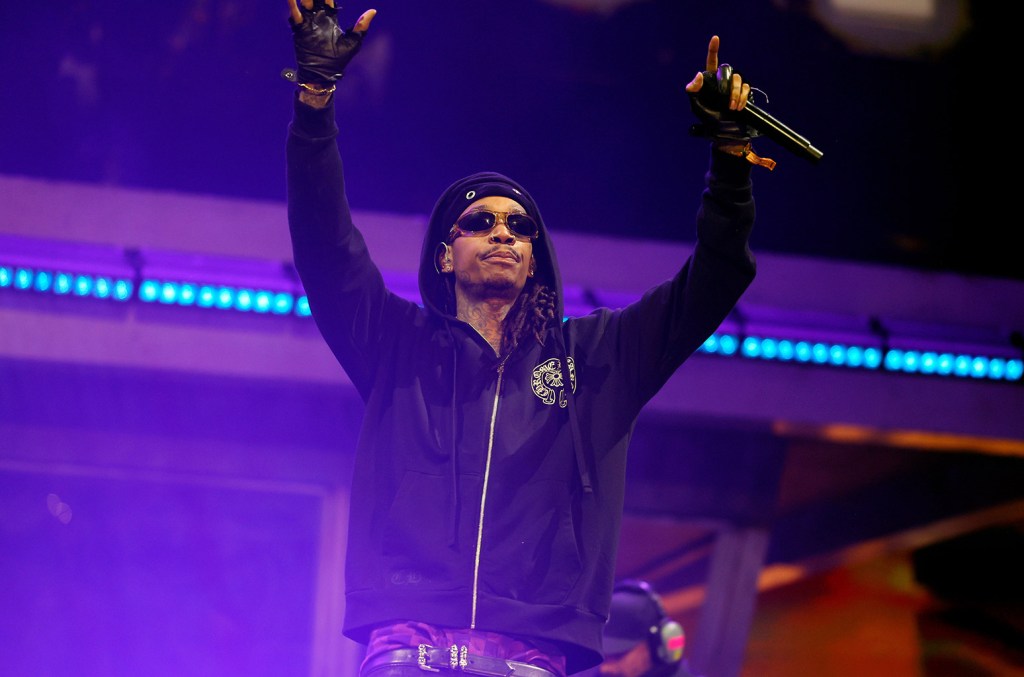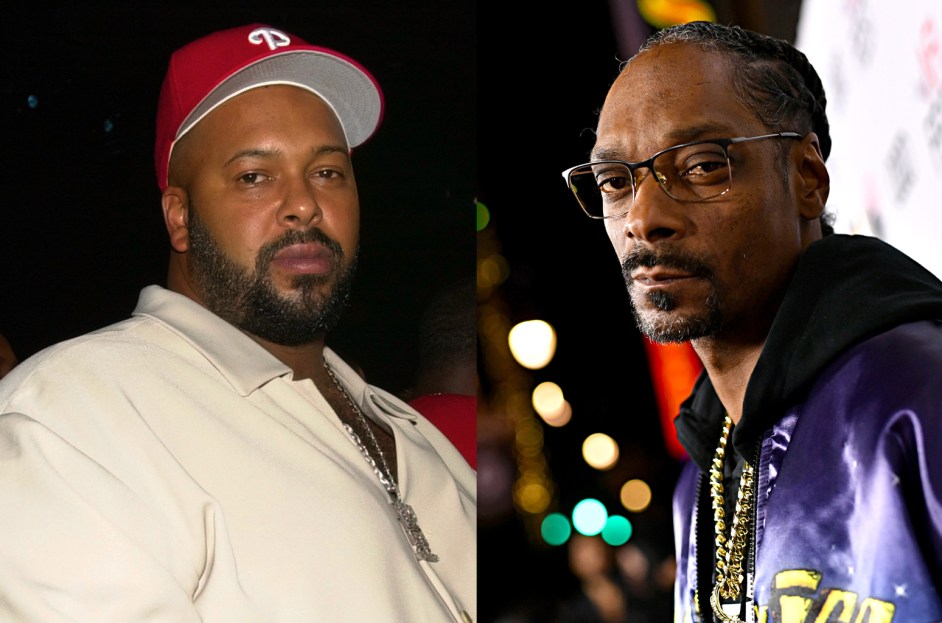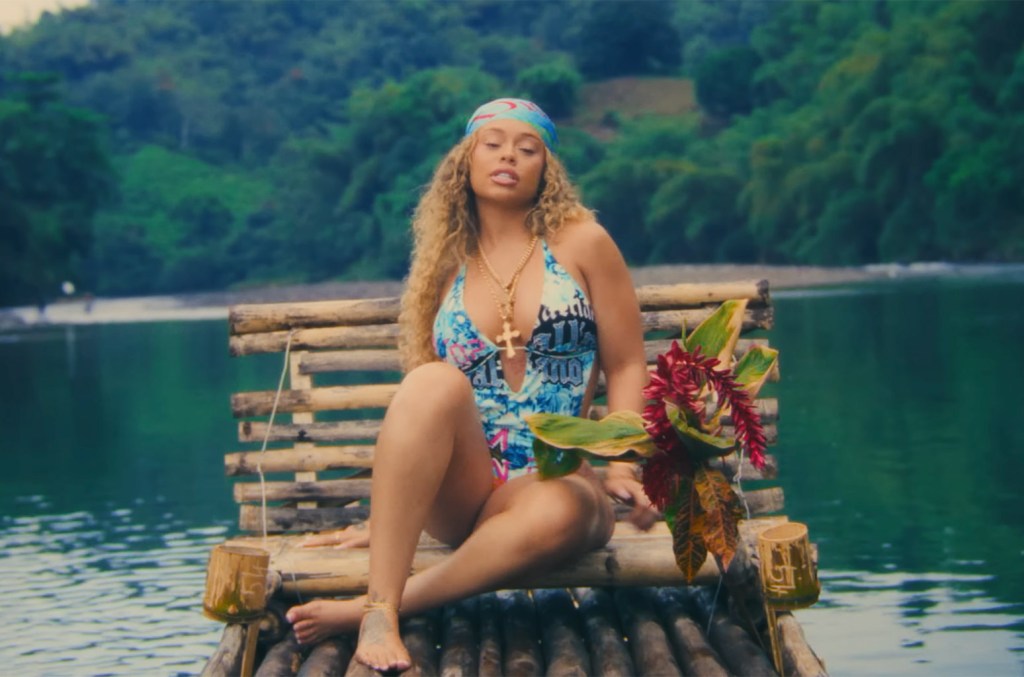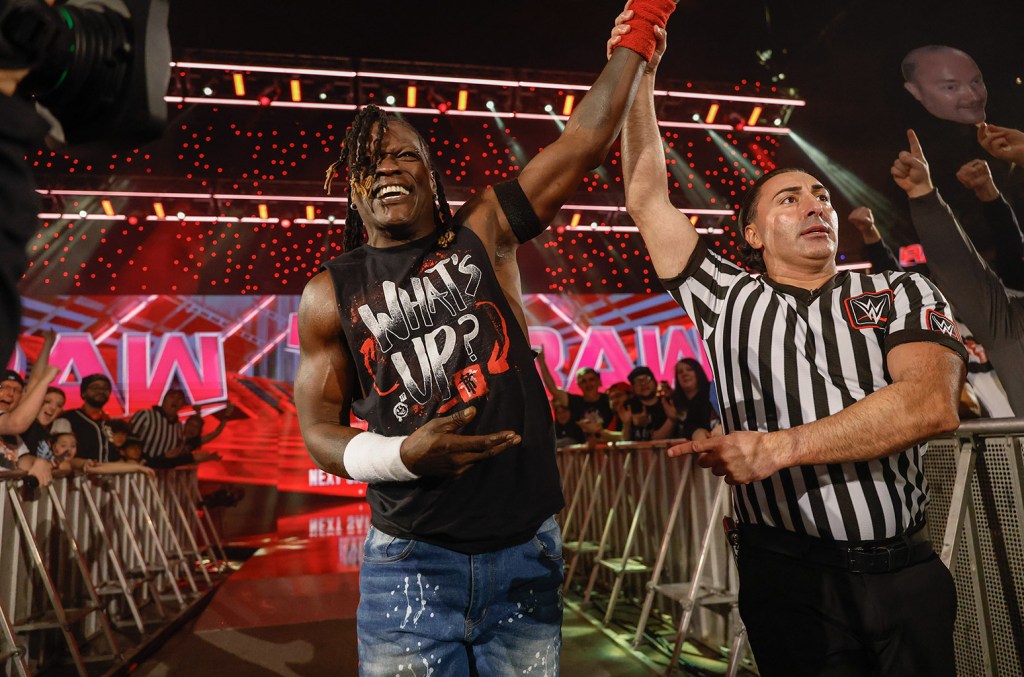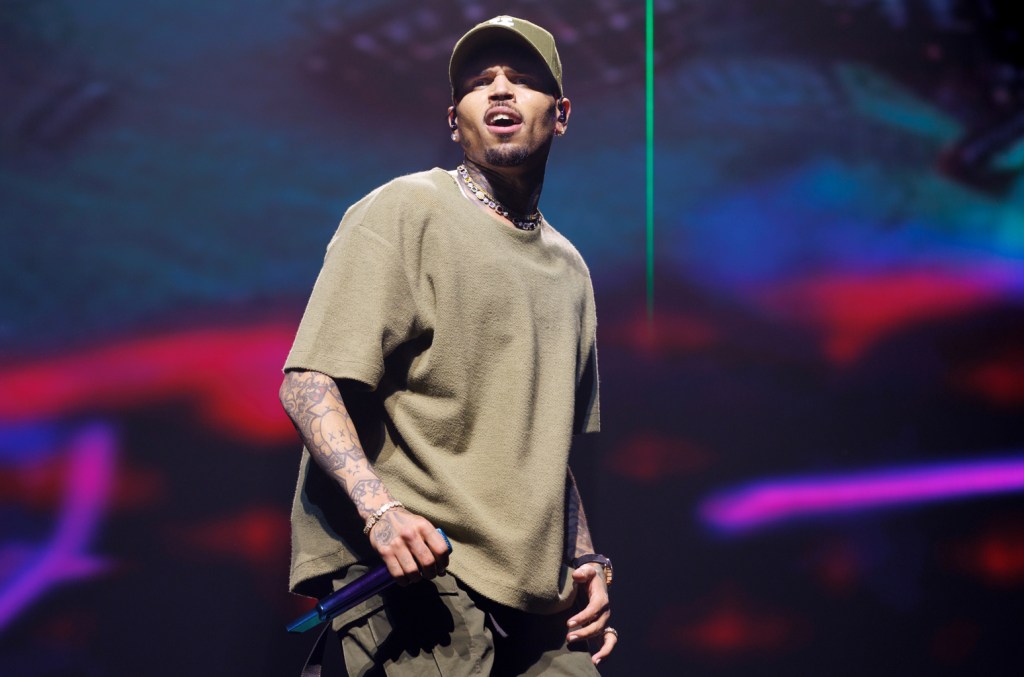R&B/Hip-Hop
Page: 43
Wiz Khalifa announced additional tour dates for later this summer, and he’s bringing a handful of friends along for the ride.
On Monday (May 19), Wiz announced the Good Vibes Only Tour: Smoker’s Edition, which will serve as the second leg of his upcoming summer tour across North America.
While the first half of the tour will include opening performances from Da Baby and Sean Paul, these new dates will feature special guests including Dom Kennedy, Earl Sweatshirt, Curren$y, Ab-Soul, Chevy Woods, Fedd the God and DJ Bonics. The second leg kicks off Tuesday, July 29, in Austin, Texas, at Germania Insurance Amphitheater. From there, the smokers crew will head to Phoenix, Los Angeles and more, before wrapping Thursday, Aug. 14 at Cascades Amphitheater in Ridgefield, Washington.
As previously reported, the initial dates of the Good Vibes Only Tour will start July 6 in Darien Center, New York. The Live Nation-produced trek is slated to hit Massachusetts, Ohio, New Jersey, Toronto, Pennsylvania, Virginia and more before concluding the first leg in Atlanta on July 27.
The tour comes after Wiz dropped off Kush + Orange Juice 2 in April. Khalifa recently sat down with Billboard and said he never gets sick of performing his anthems even after two decades in hip-hop.
Trending on Billboard
“I love playing all my songs, man. I get hyped for everything,” Wiz said. “Because there’s somebody out there and it’s their first time seeing that s–t. They might have rode around their car with it for 15 years, they might have broke their whole motherf—-ing life and their girl bought ’em a ticket and they do not want to see you perform that song lazy. They want to see some heat.”See the full list of dates of of the Smokers Edition tour below.
July 29 – Austin, TX – Germania Insurance AmphitheaterJuly 31 – Albuquerque, NM – Isleta AmphitheatreAug. 1 – Phoenix, AZ – Talking Stick Resort AmphitheatreAug. 3 – Concord, CA – Toyota Pavilion at ConcordAug. 7 – Inglewood, CA – YouTube TheaterAug. 8 – Chula Vista, CA – North Island Credit Union AmphitheatreAug. 9 – Irvine, CA – Great Park LiveAug. 12 – Auburn, WA – White River AmphitheatreAug. 14 – Ridgefield, WA – Cascades Amphitheater
05/19/2025
The current and former leaders of Death Row Records have had a tumultuous relationship over the years.
05/19/2025
Ye (formerly Kanye West) will not be performing in South Korea this month, as his May 31 concert has been cancelled.
According to Korean ticketing platform Interpark Global, West’s May 31 show at Incheon Munhak Main Stadium was cancelled due to “recent controversies” surrounding the rapper. The vendor didn’t expand on exactly what controversy surrounding Ye caused the cancellation.
“We regret to inform you that the ‘YE LIVE IN KOREA’ concert, originally scheduled for Saturday, May 31, 2025, has been cancelled due to recent controversies involving the artist Kanye West (YE),” a message from Interpark Global’s website reads. “We sincerely apologize for the inconvenience this may cause. We kindly ask for your understanding. All purchased tickets will be automatically cancelled, and full refunds will be processed sequentially.”
Explore
Explore
See latest videos, charts and news
See latest videos, charts and news
Reuters also confirmed on Monday (May 19) that the West concert would not happen with South Korean e-commerce company Coupang.
Trending on Billboard
West has been spotted in Mallorca, Spain, in recent weeks with his wife, Bianca Censori, as well as streamers Sneako and Digital Nas.
The embattled rap visionary has been wrapped up in various controversies over the course of the last few months as he’s spewed anti-semitic and anti-LGBTQ rhetoric on his social media platforms.
Ye claimed that his controversial “Heil Hitler” song was banned from all digital streaming platforms after attempting to release the track earlier this month.
“Heil Hitler by Ye has been banned by all digital streaming platforms,” Ye wrote on X while calling out the double standard he sees in streaming censorship. “While Rednecks by Randy Newman remains streamable They’re literally keeping the n—-s down.”
West’s last interview saw him storm off an appearance on Piers Morgan’s Uncensored show earlier in May, within minutes of the sit-down. “You’re not gonna take inches off my di–, bro,” the Chicago native said before he left the interview. “I’m a gift, bro. Why do all you people in media act like you haven’t played my songs at your weddings, or graduations or at funerals or when your child was born?”
He continued: “You take someone like that’s living, like a [John] Lennon or a Michael Jackson. That nuance right there is idiotic. It just shows the hate that you put out for people that put out love. There’s so much love in the art that I put out. This is what you get for now, we can circle back when you can count.”
Billboard has reached out to reps for Ye for comment.
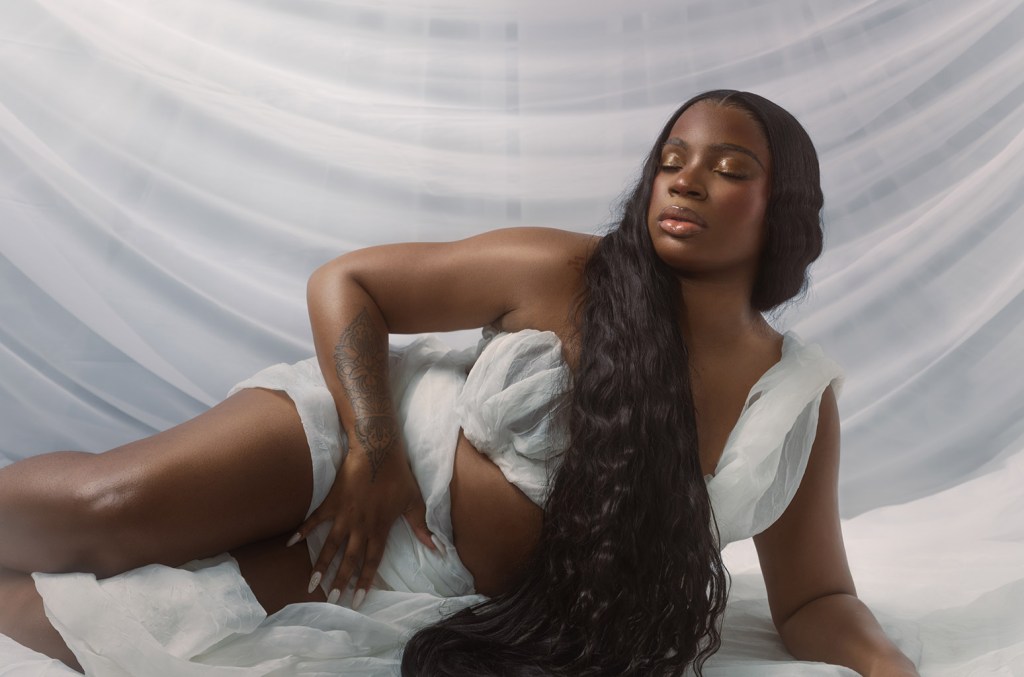
In the five years since Opia, her Polaris Music Prize-shortlisted debut studio album, Canadian R&B singer-songwriter Savannah Ré has transitioned out of the major label system into an era of independence heralded by the self-assured melodies of Formed, her new full-length project.
Executive produced by her husband Yogi the Producer — who won his first Grammy earlier this year, thanks to his work on Chris Brown’s 11:11 (Deluxe) — Formed finds Ré building on her previously established sonic profile of soulful, midtempo R&B with forays into country-esque guitar samples (“Go’ Head”), gutsy wordplay (“Nine Lives”) and candid moments of pure seduction (“East Side Demon”). A featureless affair, the new project flaunts the three-time Juno Award winner’s versatility while keeping her grounding themes of maturation and divine femininity centered.
Formed was initially an expansion of Ré’s 2022 No Weapons EP, but her journey into the indie arena and general life changes caused the project to evolve into something entirely separate. The pitfalls and triumphs of that journey punctuate the entire project, from the testimonial that is “Made It Out” to the poignant self-reflection of “Where You Left Me.” Though she wades through a well of intensely personal experiences for Formed, the project feels notably looser than Opia – and that was intentional.
Trending on Billboard
“I think I was hypercritical of everything during Opia,” Ré tells Billboard just days after returning from a seven-year anniversary trip to St. Lucia with her husband, who was honored with a parade celebrating his Grammy win. “Being a perfectionist can ruin the essence of what you’re doing. I’m having more fun making music this time around, to be honest.”
In a wide-ranging conversation with Billboard, Savannah Ré breaks down Formed, reveals her initial reaction to Drake sampling her for 100 Gigs, and details how she’s navigating being an independent artist.
Opia, your last full-length project, dropped almost five years ago. Why the long wait between that album and Formed?
How much time do we have? [Laughs]. Honestly, a lot of things changed very rapidly. I was in a deal with Universal Music Canada from 2018 all the way to 2023, when I finally went a different direction. It took some time for me to figure out what it is I want to do. For my entire career prior to [this moment], I’ve been a signed artist; [I’m] figuring out navigating things myself. I had to be in the driver’s seat.
It’s a completely different process being independent versus being signed. There’s so many extra steps, so many things to have your eyes across, so much business that I’m doing now. I wanted to make sure that the music wasn’t getting lost in that process, and that I was still sticking to my vision. It took a little while, but we’re here now!
Talk to me a little bit about Matrimony Records.
Matrimony is the label that I started with my husband, Johann [Deterville], Yogi the Producer, last spring. We were like, “We do everything together already, so why don’t we make it official before thinking about signing anywhere else or going back to a major? We should have our own thing on paper.”
A lot of our foundation, of course, is love and all the things that go into a relationship. But it’s music as well. That’s how we fell in love — so what better name than “Matrimony?” It’s marriage, as far as love, but it’s marriage to the music, as well. We’re also looking forward to finding and signing other artists as well. We want to build Matrimony up.
You won the Juno Award for traditional R&B/soul recording three years in a row, effectively making you, if not the face, one of the defining voices of Canadian R&B. How does that make you feel?
I hate that. No, I’m kidding! [Laughs.] Honestly, I felt seen. It was an honor to be the first artist to be nominated in both the traditional and contemporary R&B/soul categories in the same year. To be nominated, and then to win again and again and again, I was like, “OK, that’s enough now, guys!” I know everybody looks surprised, but I was genuinely surprised every single time I won. It’s been great, and it feels affirming.
What was the first and last song you finished recording for Formed?
“Go’ Head” was the first. It actually wasn’t for me because I’m a writer as well. I was pitching that song around, and from what I know, Chris Brown’s team had it for two years. We thought it was going to make it on [2022’s Breezy], and then it didn’t, so I kept the record. I played it for some of my non-musician friends, and they were like, “Oh my gosh, you need to release this song.” Seeing that visceral feeling, I was like, “I’m gonna put this on the project.”
I think we wrote that song in 2018, so we went back in and rejigged it a little bit to be closer to what I would say. The production is exactly the same, and the topline is pretty much exactly the same. And now it’s the focus track for [Formed].
The last song was “Made It Out.” I have this thing with projects where I’ll get really close to finishing, and then I’m like, “It’s missing one song.” I won’t exactly know what it sounds like, but I’ll know how it’s gonna make me feel when I hear it. I wrote “Made It Out” with Marcus Semaj, who wrote several songs on Opia with me. He sent me the song, and I was like, “Brother… can I have it?” And he was like, “Of course.”
Because I’m a writer, I’ll always change things or write another verse or whatever. But this song… it was like he was looking into my life. To me, it’s a message of, making it out of your circumstances and the things that were supposed to keep you down. After that, I knew the project was done.
What would you say changed the most — or not at all — about your approach to songwriting and singing on Formed versus Opia?
I’d say a lot changed. I think I was hypercritical of everything during Opia. While I’m still a perfectionist, I try not to ruin things anymore because, to be honest, being a perfectionist can ruin the essence of what you’re doing. Do you love the song? Does it make you feel something? Then you don’t need to scrutinize it into the ground or rewrite it 17 times or spend four or five studio sessions recording it. Go with your gut. I’m having more fun making music this time around, to be honest.
A couple of weeks ago, you got on Instagram to address some people missing the message of “Nine Lives” because they couldn’t get past the use of the word “p—y.” Was that a first for you? How does that make you feel as an artist?
It’s quite different! I’m not used to being on the “hate train” side of things. I was very clear that [“Nine Lives”] is for the girls. Unfortunately, it ended up, on the incel side of the Internet with older, non-Black men. And it’s like you, [this song] wasn’t for you. It’s a song about female empowerment sung by a very visibly Black woman. It doesn’t matter what I say when I open my mouth, you are not gonna like it. So, even when addressing it, I didn’t make it about them. I just doubled down on the song’s message.
And with [the word “p—y”] especially, it’s so interesting that it’s okay for it to be said in all these negative ways. But then, I reclaim it in a positive way, and it’s an issue. Although that word may have been used mostly in a vulgar way, to me, it holds power. When I sing, “bring life,” I’m not just referring to childbirth. I mean that there is a woman in everybody’s life who breathes life into them. I’m talking about some serious stuff in the song.
Formed also houses “Sex With My Ex,” which Drake sampled on his 100 Gigs website. Where were you when you found out about that? What was your initial reaction, and what, if anything, do you think will come of that at this point?
We were in the studio working on finishing [Formed], funny enough. When it dropped, the internet started going crazy, so we went to check it out. We clicked around and found a Boi 1-da folder and started clicking through it. The first video was my voice, and then there was a second one, and a third one with a different vocal sample of mine. We’re sitting there flabbergasted at this point, because that third clip was actually Drake in the studio.
I immediately FaceTimed 1-da, like, “What the helly?” And he didn’t even know much. Based on [Drake’s] haircut, the footage seemed to be from the Certified Lover Boy era, I guess. 1-da has always said that it takes a lot for Drake to record on a beat, so, generally speaking, it’s probably going to come out. He has a 99% kill rate. So, I was like, “OK… so what do I do?” Because “Sex with My Ex” was a freestyle I recorded in 2018!
So, we ended up recutting the song in 2022, which is when I met Leon Thomas, and he, myself, and Yogi flipped it. “Sex” was already on [Formed] at that point, so to me, that was some universe stuff. What are the chances of a song that’s been sitting since 2018 ending up in this Drake 100 Gigs thing? Initially, it wasn’t a single, but the team quickly pivoted and dropped the song late last year.
I don’t know if he’ll ever do a 100 Gigs mixtape, but it definitely put more eyes on me and the song. As a freshly independent artist, I’m just grateful either way.
What’s the most important thing you learned from Boi 1-da while you were on his 1Music label?
Prior to signing with him, I was like, “Hey, there aren’t a lot of female artists out there that look like me, maybe I should just focus on being a writer.” That’s how our initial connection was made. Someone of his caliber and stature looking at me and saying, “Not only do I think you should be an artist, but you should also be my artist…” that changed the game for me. It made me confident and self-assured. I was able to lean on him when it came to anything musical.
People think being his artist made it easier – absolutely not. If he don’t like something, he [won’t mince words]. So that started to breed a certain standard within me as well. He would also start bringing me to [different artists’] sessions so I could be a fly on the wall and see how these things work. I was really fresh when he signed me, and I don’t think a better person could have ushered me into the music world and treated me with such respect. That’s like my brother for life, I talk to him every day, whether I’m signed to him or not. He changed my life.
How do your Jamaican roots – and Yogi’s Lucian roots – manifest in your music?
My Caribbean roots are what raised me. Even in the R&B space, [West Indians are] going to approach it a little differently. People have credited rap for some of my rhythmic choices, but I think it goes back to the different riddims and cadences we hear in our [reggae and dancehall] music. There’s always those little sprinkles, and they’ll definitely come through a lot more on the deluxe, [which will have three or four new songs and be out soon]. And Yogi be sneaking little riddims into things all the time!
Do you have any plans to tour Formed yet?
I do. And God willing, it will happen. But, chile, being independent is ghetto as hell, okay?! It’s an interesting climate for touring. We’re seeing so many major artists cancel their tours, and I just want to be very intentional about it and make sure I can give the best show possible. I’m sure I could figure out a way to just bring my little self and do my thing, but that’s not the show I want to bring for my first headlining tour. I want it to be as big as the music and as big as I can possibly make it. That’s one of my goals, and hopefully, this year, I can pull it off.
Kai Cenat will be making his directorial debut behind the camera as the streamer’s been tapped by Drake and PartyNextDoor to direct the OVO duo’s video for “Somebody Loves Me”. Cenat explained during a live stream on Saturday (May 17) that he’s going to direct the visual for Drake and PND’s moody hit, but also […]
As Joey Bada$$ handles California cats like Ray Vaughn, Reason, AzChike and Daylyt on his lonesome, it looks like the West Coast isn’t giving up last year’s “Not Like Us” and GNX-feuled momentum without a fight. Over the past few months, Joey has been heralding his return to the rap game with slick boom-bap tracks […]
Young Thug has reacted to photos of Gunna that seemingly show that the Atlanta rapper has covered up his YSL tattoo. A photo of a shirtless Gunna working out hit social media, and fans noticed that the YSL logo usually on his left bicep had been covered with flames of ink. The viral pics eventually made it […]
Drake placed a seven-figure bet on his Toronto Maple Leafs, but unfortunately, the Leafs were demolished in game seven on their home ice Sunday night (May 18) by the Florida Panthers. Explore See latest videos, charts and news See latest videos, charts and news Drizzy bet with his heart instead of his head on Sunday […]
Before Ron Killings became a grappling warrior in WWE rings, he was a rhyme-slinging MC barreling through the Carolinas in pursuit of rap notoriety. Armed with demo tapes and unflappable ambition, Killings trekked from city to city, chasing his big break at the celebrated Jack The Rapper Conventions — a cornerstone of hip-hop culture that, for over two decades, united Black executives, DJs and artists under one roof.
Explore
See latest videos, charts and news
See latest videos, charts and news
There, Killings brushed shoulders with some of hip-hop’s most venerable legends, including Tupac Shakur and Eazy-E, leaving an indelible mark with his contagious personality and tireless hustle.
“I would follow those places around. Every year I’d go,” Killings recalled in an interview with Chris Van Vliet earlier this year. “It lasted a good three months, and I’d meet Tupac. He’d be at the Jack The Rapper Convention. It was him and Eazy. There would be so many celebrities there. It was the WrestleMania of the music industry.”
Trending on Billboard
Though Killings never reached the rap pinnacle of Pac or Eazy, his efforts paid off in another arena. After signing with WWE in 1998, he rebranded as K-Kwik — a spry, charismatic performer who brought lyrical swagger to the squared circle. By the time he exited in 2002, Killings was a two-time Hardcore Champion, laying the groundwork for a storied wrestling career.
Shortly after, Killings joined the rising promotion TNA, where he elevated his stock and became one of its premier in-ring performers. In doing so, he made history as the first African American NWA World Heavyweight Champion — a title he held twice. His star power on the indie scene eventually caught WWE’s eye again, and in 2008, Killings returned. This time, with refined in-ring skills and his signature comedic flair, he became a fan favorite all over again.
Over the years, Killings racked up accolades — United States Champion, Tag Team Champion, 24/7 Champion — while headlining against marquee names like John Cena and AJ Styles. But beyond the belts and bouts, his mic work made him unforgettable. Whether playing the lovable goof who couldn’t tell left from right, or hilariously claiming Cena was his childhood hero (despite being five years older), Killings turned even throwaway segments into Saturday Night Live-worthy skits. He didn’t just survive in WWE — he thrived, by turning his time on the mic into comedic art.
Now, at 53, Killings steps into what might be his most poetic moment yet: a one-on-one match against the Undisputed WWE Champion, John Cena, this Saturday at Saturday Night’s Main Event. The match was sparked after Truth jokingly told Cena he “sucks at wrestling” following his victory over Randy Orton earlier this month. Now leaning into a darker persona, Cena didn’t take it lightly, slamming Truth through a table at a post-match press conference.
This weekend, two veterans — both closer to curtain call than curtain jerk — will share the ring in a match loaded with nostalgia and mutual respect. For Killings, it’s a chance to shine once more on a grand stage, proof that the consummate professional can still steal the show.
And in case you’re wondering — yes, Truth still has big boy bars. Like Cena, he rapped his own entrance theme and was still dropping music as recently as 2024, teaming up with D4L’s Fabo on the swaggering tune “You Know It.” Whether he’s taking bumps or spitting rhymes, Killings has always done one thing without fail — bring the truth.
A fellow musician and friend of Chris Brown has been charged alongside the Grammy-winning singer on allegations they beat and seriously injured a music producer at a London nightclub in 2023, police said Saturday (May 17).
Omololu Akinlolu, 38, who performs under the name HoodyBaby, was due to appear in Manchester Magistrates’ Court on a charge of causing grievous bodily harm with intent.
Brown, 36, was jailed without bail on the same charge Friday (May 16), throwing his upcoming tour into question. He is scheduled to appear at Southwark Crown Court in London on June 13, which is the third day of his world tour.
Trending on Billboard
Akinlolu is a rapper from Dallas, Texas, who has collaborated with Brown and Lil Wayne. He also goes by the names Fat Leopard and Super Hood.
Police gave no details on what role Akinlolu played in the alleged assault but said he was charged in connection with the same incident as Brown.
Brown was on tour in the U.K. in February 2023 when he launched an unprovoked attack on producer Abe Diaw, striking him several times with a bottle at the Tape nightclub in the swanky Mayfair neighborhood in London, prosecutor Hannah Nicholls said in court Friday.
Brown then chased Diaw and punched and kicked him in an attack caught on surveillance camera in front of a club full of people, she said.
Brown did not enter a plea and only spoke to confirm his name, birth date and gave his address as the Lowry Hotel, where he was arrested in Manchester early Thursday and taken into custody.
Brown’s representative has not responded to multiple requests for comment from The Associated Press.
Brown, often called by his nickname Breezy, burst onto the music scene as a teen in 2005 and has become a major hitmaker over the years with notable songs such as “Run It,” “Kiss Kiss” and “Without You.”
He won his first Grammy for best R&B album in 2011 for F.A.M.E. and then earned his second gold trophy in the same category for 11:11 earlier this year.
He is scheduled to launch an international tour next month with artists Jhene Aiko, Summer Walker and Bryson Tiller, opening with a European leg on June 8 in Amsterdam before starting North America shows in July.

 State Champ Radio
State Champ Radio 